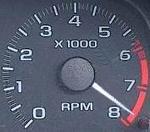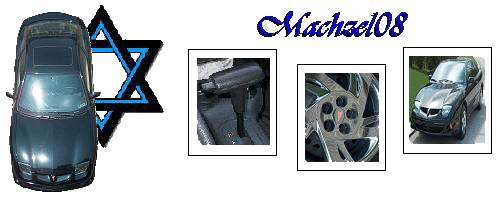Well, it turns out that I had a number of things going on, not just one problem. I just got this car, bought it used with 105,000 miles on it but in (mostly) really good shape. Basically, some regular tune-up type stuff made a HUGE difference, and I didn't even touch the IAC valve. Here's what I did:
- Degreased the engine (just because it needed a good cleaning). Was careful to not get the distributor or other important bits wet...
- Replaced all 4 spark plugs with new, properly gapped plugs. The old ones were worn, although not extremely. They DID look like they were the original plugs, though. BTW, the Haynes manual for my car (2000 Sunfire 2.2 OHV, Automatic) is wrong about the gap for plugs on this model. They say it is 0.050, but that's not true. It is 0.040... The 0.050 gapping came along in 2001, NOT 2000...
- Replaced all 4 spark plug wires with new ones. The old ones had a good bit of corrosion inside the caps.
- Cleaned out the throttle body with carb cleaner. It was pretty gummy in there, now it's clean and shiny

Checked the throttle action, confirmed that it was operating correctly and ranging from fully closed to fully open.
- Replaced the air filter. The old one was dirty and BENT. It had been jammed into place incorrectly, and unfiltered air was bypassing it in the intake.
- Verified that all 4 fuel injectors were connected and seated properly.
- Ran a full compression test on each cylinder while I had the plugs out. All 4 plugs were out during the testing, and I found a problem that is probably a BIG factor causing the rough idle. Cylinder #3 has low compression compared to the other cylinders.. Low enough that it is out of spec according to the Haynes book. The other three cylinders were reading 175 (give or take a little) on the compression gauge. #3 was only hitting 120, which is below the spec of "within 75% of the other cylinders" set by Haynes. Low enough to cause a rough idle... So, I added a little 5W30 through the spark plug hole, and ran a wet compression test on #3. It DID increase compression, but not by much... Only up to 130. So, I'm losing compression in that cylinder, and it's probably a valve leak rather than a piston seal (whew! MUCH easier to take on when I have the money and time). The good thing is that I'm not losing ALL compression; it will hold at 120 for quite a while, so it's not dead yet.
- Meant to change out the fuel filter, but ran out of time. Will do that tomorrow.
- Didn't change the oil because the current oil and filter only has 1500 miles on it.
The end result??? Well, I'm thrilled, actually! It's purring like a big kitten when idling in park or neutral, which it wasn't doing before. The idle is no longer rough when the car is not in gear, and the in-gear idle is much improved, although not 100% smooth. A passenger didn't notice idle vibration at all, actually, until I pointed it out. I also got a BIG boost in performance and throttle responsiveness. It jumps like it should when I get on the gas, which it also was not doing before. Acceleration is greatly improved, especially when I'm at higher speeds on the highway. Engine noise is reduced as well; it's a much quieter ride.
So, it seems that doing normal tune-up things worked wonders in this case, and I have an explanation for the remaining slightly-rough idle which I'll take on very soon (the leaky valve in cyl 3). Give the motor some clean, regulated air with no leaks in the intake, a clean throttle and some good plugs and wires providing solid fire and voila! It's a happy camper without the shakes. That, and the compression testing was worth the effort because I now know where to focus on next, and am aware of a problem long before it became destructive (or so I hope). I'd strongly suggest getting out the compression gauge.
- Steve
P.S. - You think the Armor-All on all the black plastic under the hood made a difference?

Maybe the car FEELS pretty, so it's ACTING that way, too...?

Remember, the main thing is to keep the main thing the main thing...









